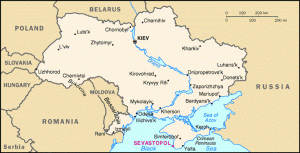The article, “Who Makes Local Memories?: The Case of Sevastopol after World War II” makes a distinct focus on the impact and significance of Sevastopol to the Soviet Union in the time following World War II. Qualls asserts the point that Sevastopol, simultaneously shed its identification with two countries at the same time, he explains how the city marginalized the Soviet Union and completely ignored Ukraine and refused to be apart of it, which was due to the goal of tying to highlight a deeper Russian history, but instead creating a localized mythology. Quall’s argues that through the emergence of mythmaking and by introducing military valor and extraordinary feats by civilians, military personnel were combining pre-Revolutionary and Soviet conceptions of heroism. With this, heroism, resistance and self-sacrifice became the face of the city and what it was most known for. The city became to be the “glory of the Russian soul’, and a “symbol of faithfulness” the lives that were lost during the war. Quall’s explains how Sevastopol focused only on becoming local and not national, further removing itself or “shedding” itself from its Soviet identification. He argues that local city planning changed the topography and toponyms of the city that put society back to pre-revolutionary heroism and guidebook authors who wrote for international audiences further scattered the myth of Sevastopol more broadly.
With the removal of Soviet identity, the article has me question how Sevastopol’s evolution really affected the Soviet Union in a negative way, if it seemed that the city was only raising the Soviet Union on a pedestal, representing its victories and its heroic features.

